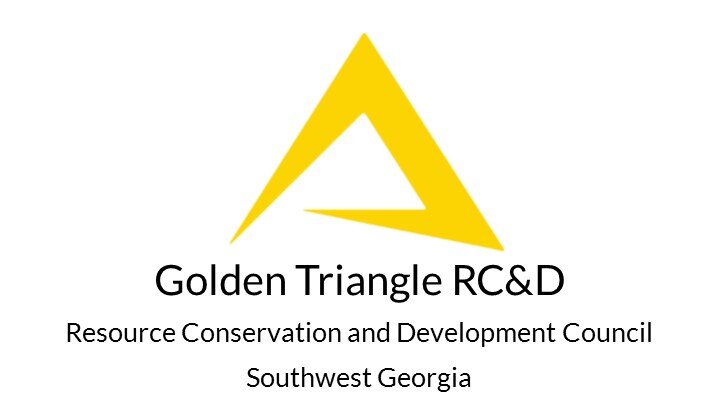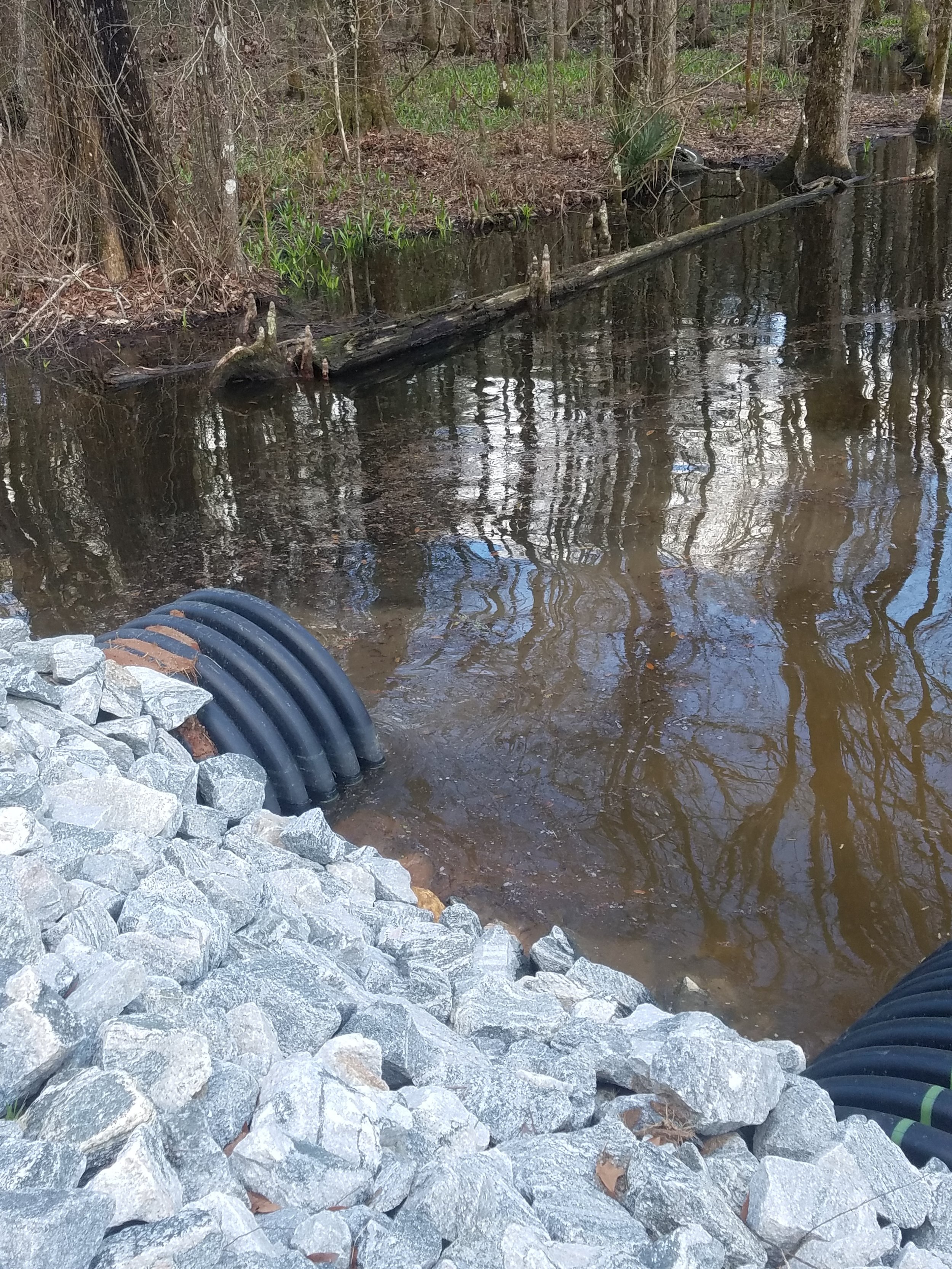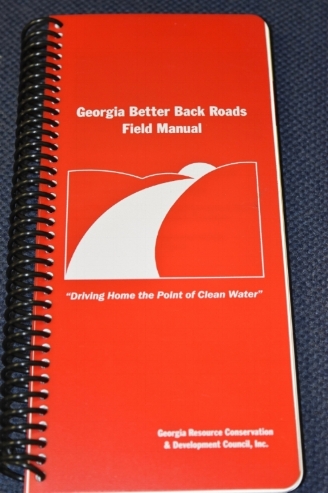It’s All in the Dirt
Better Back Roads: A Collaborative Effort to Address Erosion and Sedimentation in Georgia Golden Triangle embarked on its journey of road restoration in 2012, driven by a commitment to environmental stewardship. We partnered with the Environmental Protection Division and the U.S. Fish and Wildlife Service, aiming to restore select dirt roads within the Spring Creek basin. This initiative was not just about improving water pathways; it was a crucial effort to combat sedimentation issues that posed a threat to the delicate ecosystems supporting endangered and threatened mussel species.
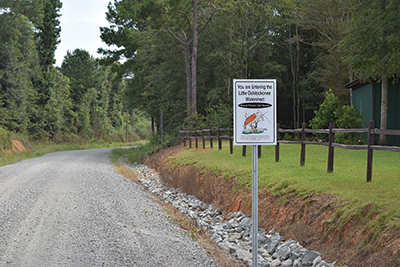
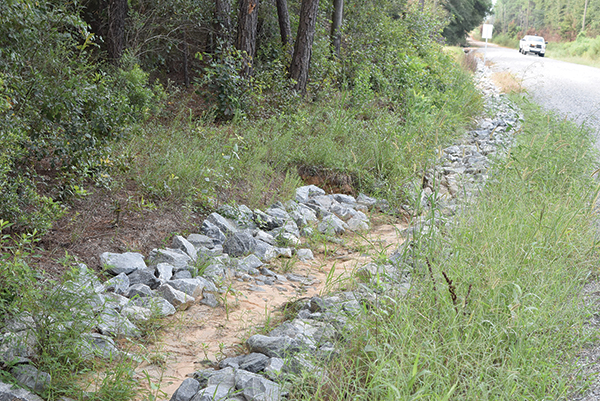
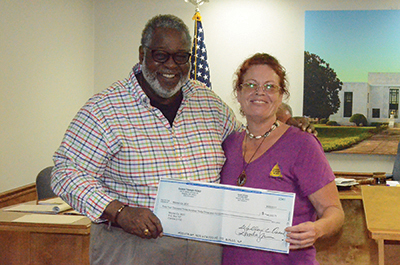
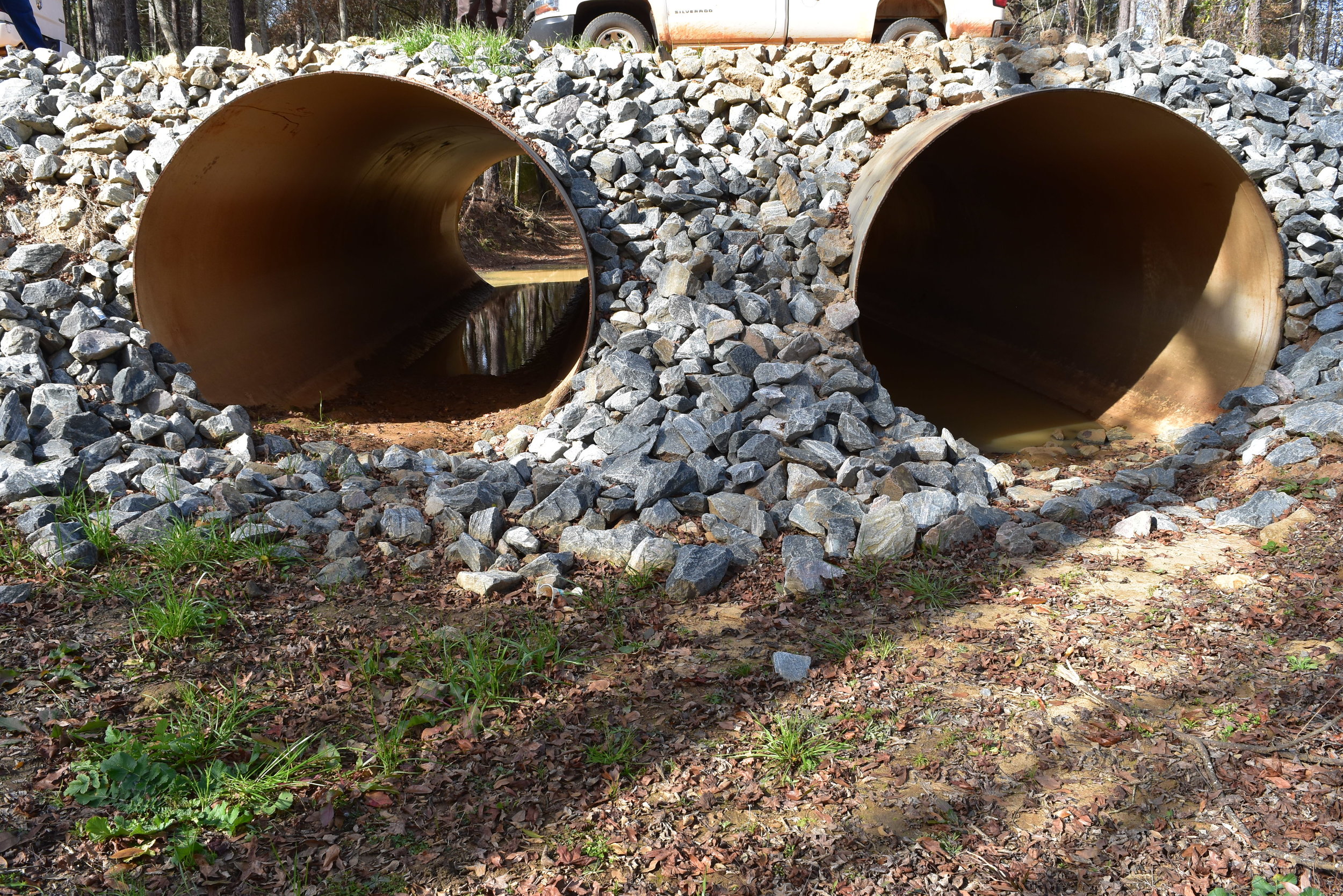
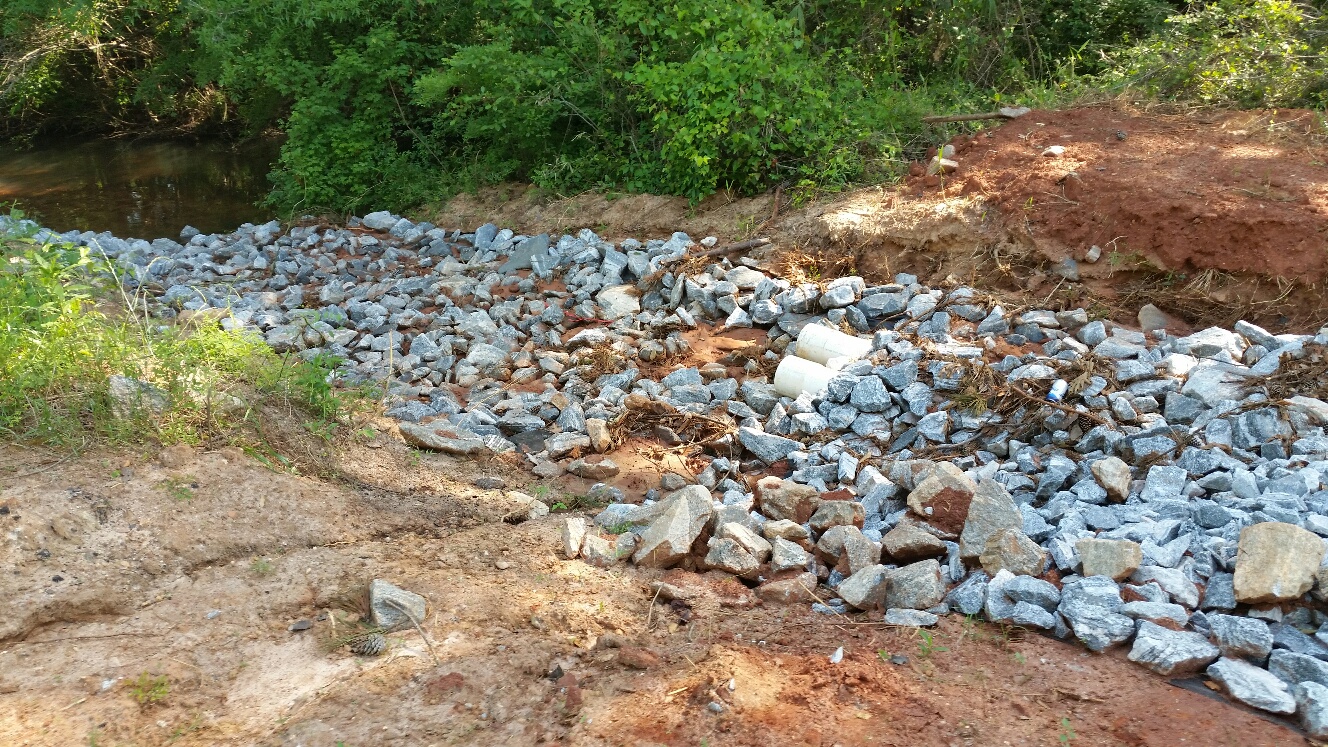
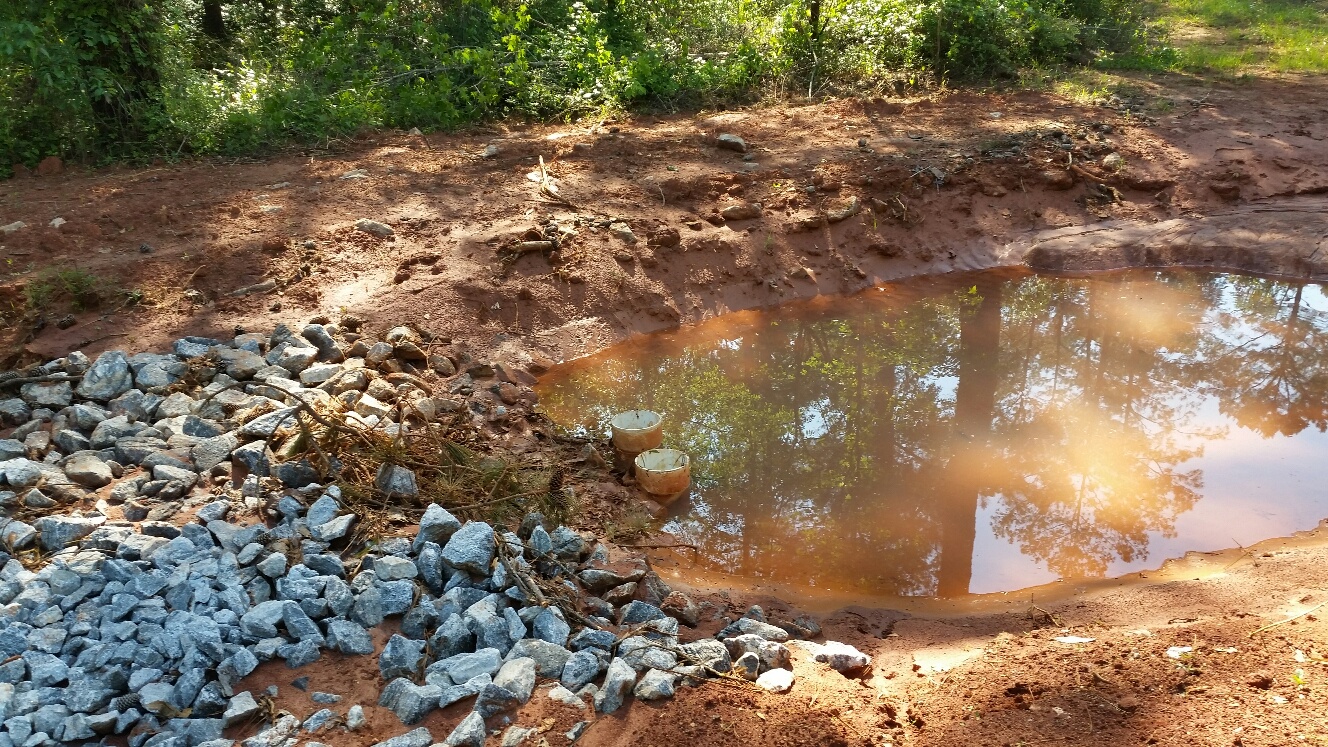

Erosion and sedimentation, primarily driven by human activities such as agriculture, construction, and forestry, pose significant threats to Georgia's land and water resources. Runoff from dirt roads is a notable contributor to this issue, as it often drains directly into waterways. These practices disturb the soil, resulting in sediment washing into streams and creeks, which leads to water pollution and the degradation of aquatic ecosystems.
Notably, dirt roads often run parallel to or directly into waterways, exacerbating the problem. When it rains, sediment—such as dirt and silt—washes off these roads into adjacent streams. This runoff clogs water channels, diminishes water clarity, and disrupts the natural flow of streams. The buildup of sediment can result in stagnant water, lower oxygen levels, and poor water quality, making these waterways unsuitable for both wildlife and human activities.
Addressing these challenges requires collaborative coordinated efforts at local, state, and federal levels to implement effective erosion control measures and restore the health of Georgia’s vital waterways. By focusing on the restoration of dirt roads, we can effectively reduce sediment runoff and enhance water quality. These efforts not only help restore the health of Georgia’s vital waterways but also contribute to the long-term preservation of the state's land and water resources.
To address this pressing issue, the Georgia Environmental Protection Division (GAEPD), through its 319 H Grant Projects, has partnered with several organizations, including the Albany Planning and Policy Center, the Lower Chattahoochee River Soil and Water Conservation District, and the U.S. Fish and Wildlife Service. Together, they are working to prevent sedimentation caused by dirt roads from entering Georgia’s waterways. A central component of this effort is the implementation of Better Back Roads techniques, which are designed to reduce sediment runoff into local watersheds and minimize the environmental impact of road runoff.
In close coordination with state and federal partners, Golden Triangle has also worked extensively with local county road departments to train their staff in these specialized erosion control practices. This collaboration helps ensure that these techniques are effectively installed in high-priority road and stream-crossing areas. Key practices in the Better Back Roads initiative include restoring eroded roadbeds using erosion control matting and aggregate rock, repairing damaged culvert pipes, and installing strategic turnouts that prevent streamside degradation and reduce road flooding. These efforts not only improve water quality but also help restore the natural flow of water, protecting both the land and the local ecosystem.
In 2020, Golden Triangle was awarded a grant by the GAEPD to update the Georgia Better Back Roads Field Manual (commonly known as the Red Book). This manual, which serves as a comprehensive guide for the management of dirt roads and the implementation of erosion control measures, is based on the principles outlined in the Manual for Erosion and Sediment Control in Georgia (the Green Book). The updated edition incorporates new technologies, methods, and best management practices (BMPs) that reflect the evolving needs of land and water conservation. These updates ensure that erosion control practices remain effective and relevant in addressing Georgia's ongoing challenge of sedimentation and runoff.
Previous road restoration efforts have been successfully carried out in Early County (Sawhatchee, Still, Weaver, and Sheffield Mill Roads), Miller County (Hornsby and Old Mill Roads), and Mitchell County (Jack Peirson Road). These past projects have laid a strong foundation for continued progress in managing sedimentation and erosion issues across our service delivery area.
In addition to these previous restoration efforts, Golden Triangle has recently completed a significant restoration project in Webster County in collaboration with the Lower Chattahoochee River Soil and Water Conservation District, U.S. Fish and Wildlife Service, and the Georgia Environmental Protection Division (GAEPD). This project, titled Better Back Roads to Improve Water Quality and Aquatic Habitat, focused on addressing sedimentation concerns in Fox Creek and Gill Pond, two vital water bodies located within the Kichafoonee Watershed in Webster County.
The restoration work involved 2,368 linear feet of road improvements around Gill Pond and 888 linear feet along Fox Creek, both of which have been significantly impacted by sedimentation over the years. The project employed a variety of Better Back Roads techniques to reduce sediment runoff and improve water quality. These techniques included the stabilization of eroded roadbeds, installation of erosion control matting and aggregate rock, reforming and stabilizing ditch structures, installing cross drain culvert pipes, and the creation of turnouts to direct water flow in a manner that minimizes impact on nearby water bodies. This initiative not only addresses immediate sedimentation issues but also serves as a model for how these techniques can be applied to other areas facing similar challenges. By improving both the water quality and the overall health of local ecosystems, the project demonstrates the far-reaching benefits of collaboration between local counties, state agencies, and federal partners. These efforts are crucial in protecting and restoring Georgia’s natural resources, ensuring that they continue to support both wildlife and local communities for generations to come.
